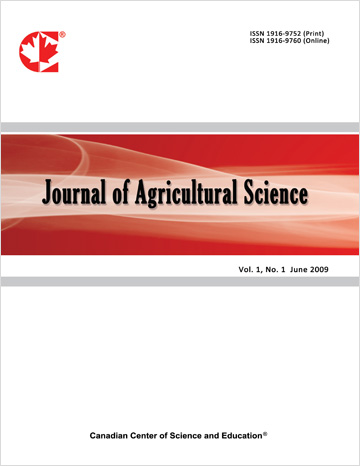Once in Three-Year Deep-Banding and Annual Shallow-Banding of P, K and Cu Fertilizer Effects on Crops and Soil Nutrients
- Kabal Singh Gill
- Gurbir Singh Dhillon
- Jan J. Slaski
- Ken Coles
- Mike Gretzinger
- Shelleen Gerbig
- Vance Yaremko
Abstract
Deep-banding of the immobile nutrients (P, K, and Cu) is considered one technique that may improve crop production under temperate dryland systems, where moister soil conditions prevail at seeding followed by relatively drier soil during the growing period. The objectives were to compare growth and yield of canola (Brassica napus L.), field pea’s (Pisum sativum L.) and wheat (Triticum aestivum L.); and nutrient concentrations in crops and soil from once in three-year deep-banding (12.5-15 cm) and annual shallow-banding (3.75 to 5 cm diagonally deeper than seeding depth) of P, K and Cu under direct seeding systems.
Small plot trials were conducted at the three sites; representing Brown (Dark Brown Chernozem), Black (Black Chernozem), and Grey (Dark Grey Luvisol) soil zones in Alberta, Canada; which represent crop growing conditions for most areas of western Canada. The nine treatments were annual shallow-banding and once in three year deep-banding of P, K, Cu and PKCU nutrients plus a control (no P, K, or Cu fertilizer). Applied thrice the recommended rate for deep-banding (in 2018) treatments and the recommended rate for the annual shallow-banding treatments in 2018, 2019 and 2020. All three phases of pea’s-wheat-canola rotation were grown at each site to generate nine years of data for each crop.
The density, height, NDVI (normalized difference vegetation index) and biomass of plants, yield for crops and nutrient concentrations in seed and biomass of crops and soil showed significantly positive responses to P, K, and PKCu additions in some cases; generally not linked to the deep or shallow placement of tested nutrients. Changes in nutrient concentrations in seed and biomass of crops in response to nutrient additions were not consistent. Treatments with P showed response more often than with the K and Cu. The soil P and Cu concentrations increased in response to their additions in some cases, but no change was observed from the K addition. Once in three-year deep-banding or annual shallow-banding methods were equally effective. The findings provide another option (once in three year deep-banding) for applying the P, K and Cu fertilizers.
- Full Text:
 PDF
PDF
- DOI:10.5539/jas.v16n8p1
Journal Metrics
- h-index: 67
- i10-index: 839
- WJCI (2023): 0.884
- WJCI Impact Factor (2023): 0.196
Index
- AGRICOLA
- AGRIS
- BASE (Bielefeld Academic Search Engine)
- Berkeley Library
- CAB Abstracts
- ChronosHub
- CiteSeerx
- CNKI Scholar
- Copyright Clearance Center
- CrossRef
- DESY Publication Database
- DTU Library
- e-Library
- EBSCOhost
- EconPapers
- Elektronische Zeitschriftenbibliothek (EZB)
- EuroPub Database
- Excellence in Research for Australia (ERA)
- Google Scholar
- Harvard Library
- IDEAS
- iDiscover
- Jisc Library Hub Discover
- JournalTOCs
- KindCongress
- LIVIVO (ZB MED)
- LOCKSS
- Max Planck Institutes
- Mendeley
- MIAR
- Mir@bel
- NLM Catalog PubMed
- Norwegian Centre for Research Data (NSD)
- Open J-Gate
- OUCI
- PKP Open Archives Harvester
- Polska Bibliografia Naukowa
- Qualis/CAPES
- RefSeek
- RePEc
- ROAD
- ScienceOpen
- Scilit
- SCiNiTO
- Semantic Scholar
- SHERPA/RoMEO
- Southwest-German Union Catalogue
- Standard Periodical Directory
- Stanford Libraries
- SUDOC
- Swisscovery
- Technische Informationsbibliothek (TIB)
- Trove
- UCR Library
- Ulrich's
- UniCat
- Universe Digital Library
- WorldCat
- WRLC Catalog
- Zeitschriften Daten Bank (ZDB)
Contact
- Anne BrownEditorial Assistant
- jas@ccsenet.org
